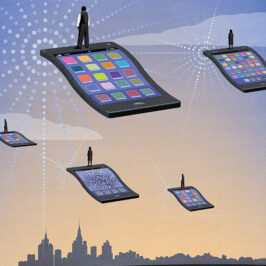Retail banking has undergone significant changes in recent years, driven by technological advancements and the evolving needs of consumers. This article explores the emergence of retail banking on a global scale, the role of mobile technology as a catalyst for change, and the transformation of key areas such as payments, products, and customer service.
The Rise of Retail Banking and Mobile Technology:
Retail banking has traditionally served as a transactional medium for individuals to save, withdraw, and borrow money. However, the emergence of mobile technology presents a transformative opportunity for the industry, comparable to the introduction of credit cards in the past. The relationship between banks and their customers is being redefined, with mobile devices acting as a pivotal medium.
Forecast and Opportunities:
Market analysts predict a significant shift towards mobile banking, with global mobile payment transaction values expected to exceed $600 billion by 2016, accompanied by over 400 million users. These forecasts indicate a fundamental change in the retail banking landscape and present opportunities for new players to cater to the needs of mobile-friendly consumers.
Transformation of Key Areas:
Mobile devices have the potential to transform three key areas of retail banking: payments, products, and customer service. Payments can be modernized and enhanced through mobile devices, with many banks around the world already implementing mobile payment solutions. The acceptance of mobile payments as a convenient and secure way of life is growing, and additional mobile payment services are constantly being introduced. Furthermore, smartphones have allowed banks to provide added value to the online shopping experience, such as displaying real-time balances on the device’s screen.
Challenges and Security Considerations:
While the emergence of new technology brings opportunities, it also raises concerns about security. Some perceive mobile handsets as less secure compared to traditional banking methods. However, addressing this perception requires the development of robust security systems exclusively for mobile applications. Banks need to assess their existing security measures and establish a unified system that encompasses all communication channels with customers. Leveraging customer location data can aid in detecting fraudulent activities with minimal disruption. The smartphone has the potential to replace outdated and vulnerable authentication methods, such as personal identification numbers (PINs), that have been in use for decades.
The Digital Revolution in Retail Banking:
Digital technology is a central topic in the retail banking industry, revolutionizing how banks attract and engage customers. This global shift towards digital channels is evident, and the “Drive-to-Digital” has become a primary focus in retail banking trends. Mobile banking, in particular, is expected to reshape traditional channels, including brick-and-mortar branches. Despite the advancements in digital banking, many customers still value face-to-face interactions, especially when dealing with complex banking products.
The evolution of retail banking driven by mobile technology is transforming the way consumers engage with financial services. The rise of mobile banking presents immense opportunities for both established banks and new players. However, it also requires a careful assessment of security measures to build trust among customers. The ongoing digital revolution in retail banking will continue to shape the industry, emphasizing the importance of providing convenient and secure banking experiences while recognizing the enduring value of personalized interactions.
